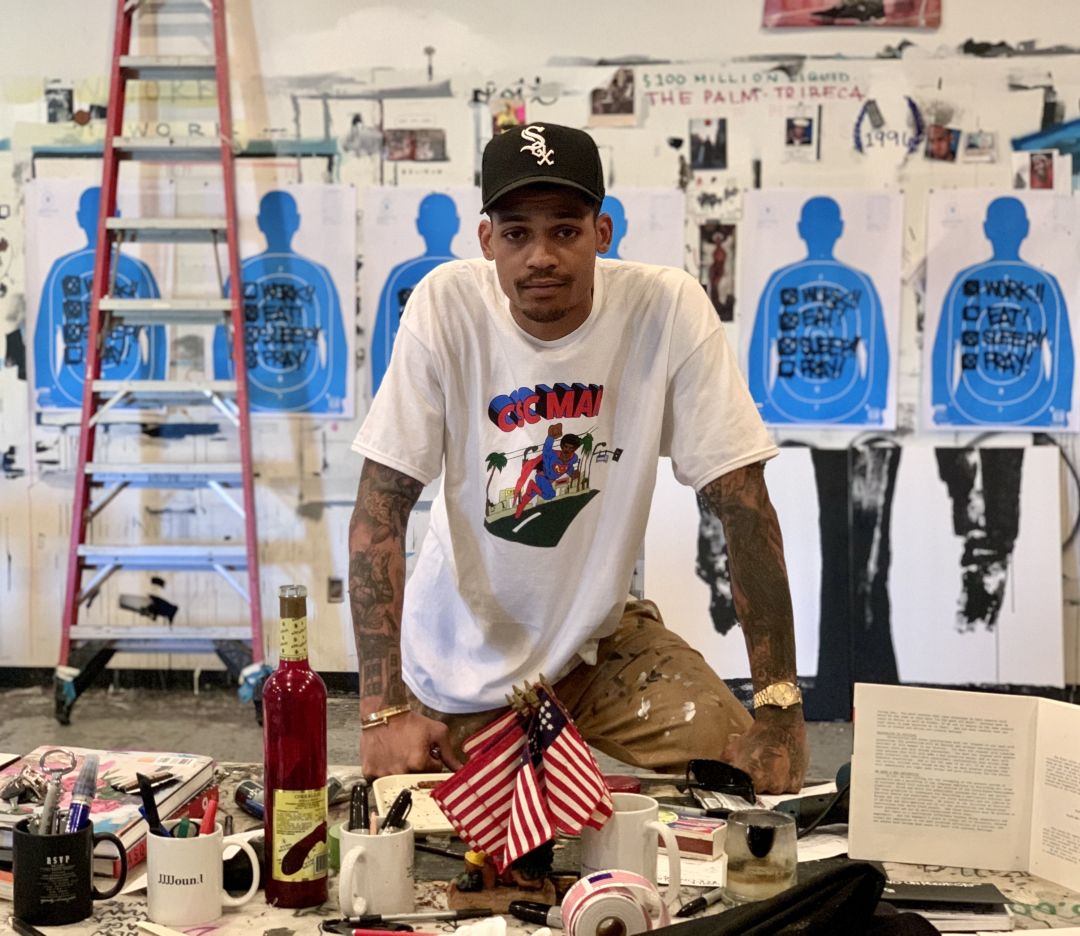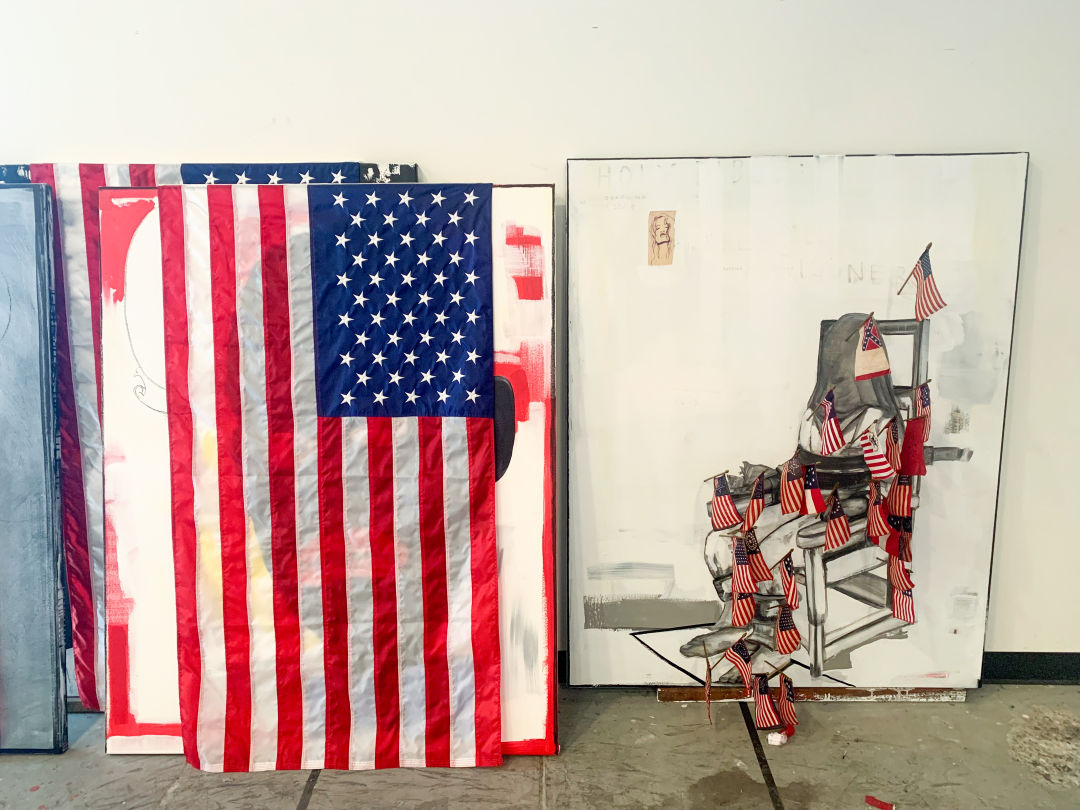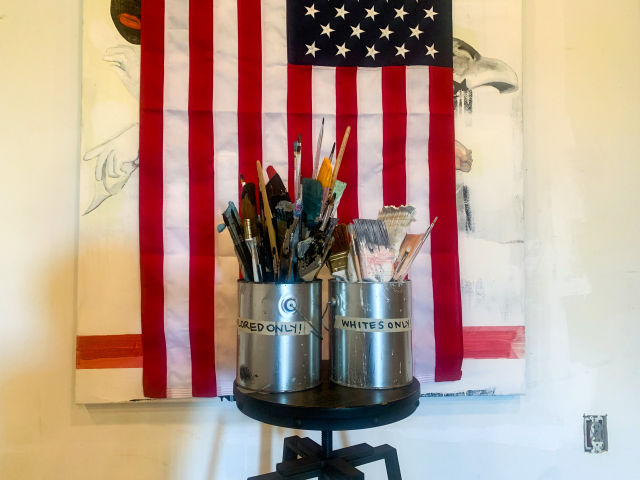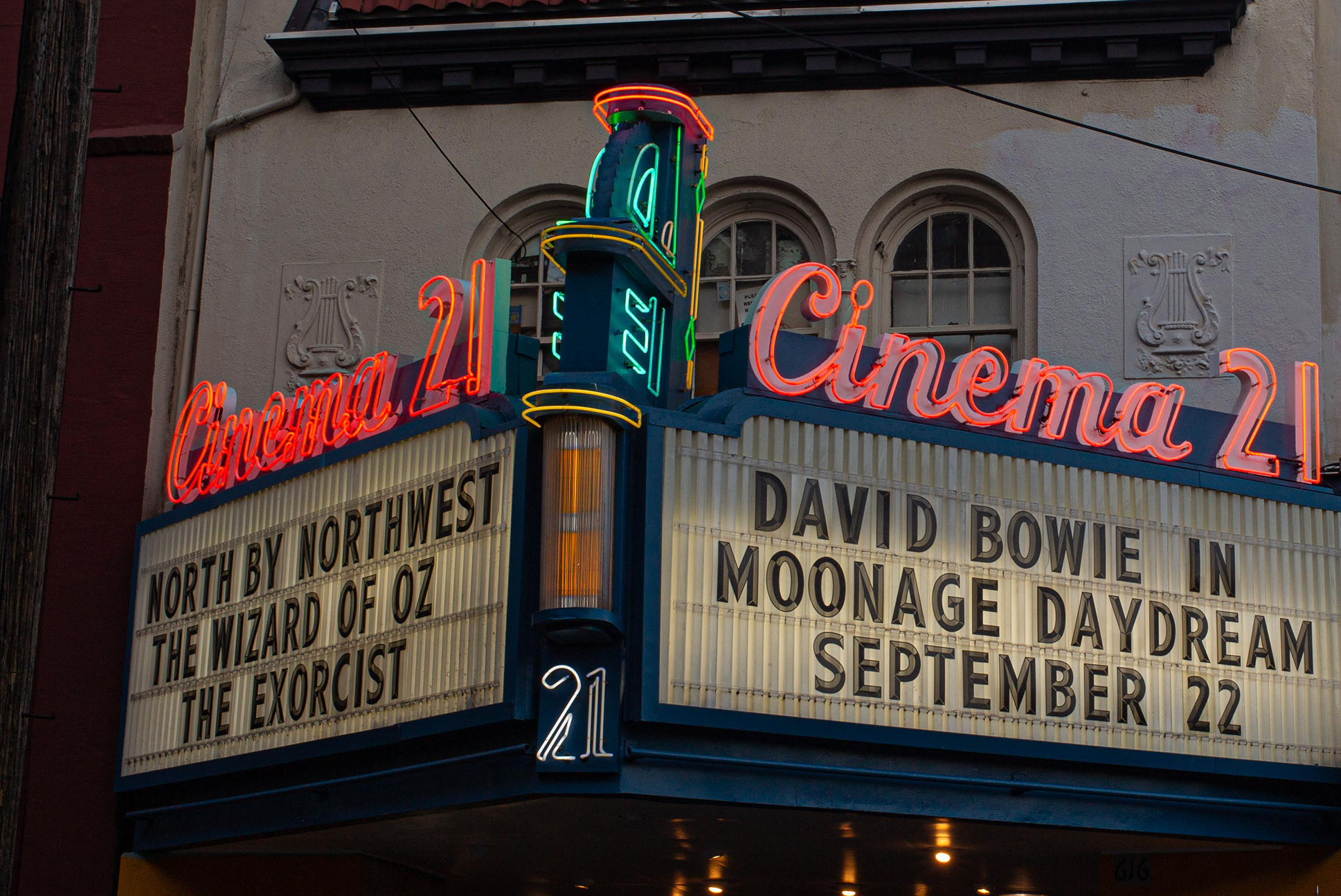Julian Gaines Isn't Under the Radar in Oregon Anymore

Image: Dalila Brent
From painting prominent African American figures to a shoe collaboration with Nike to the “Karens” portrait series that landed him the cover of New York Magazine, ever since Julian Gaines got his BFA from Northern Michigan University in 2015, the artist and Chicago native has tackled at least one of the following three themes in his work: education, activism, or a personal story.
Under the Flag, Gaines’s first solo show in Oregon, takes on all three at once.
The exhibition, on display at NW Portland’s Russo Lee Gallery August 4–27, puts America’s ugly truths on full display and insists that viewers dissect their relationships with the American flag, perhaps the country's foremost symbol of patriotism.
“My perspective as a painter is to tell stories that need to be told,” Gaines, 30, says. “When I would go to the museum, I would see things that led me to want to do more research. I'd see biblical scenes, I'd see scenes of war, and other forms of engagement that were reflected on the work that will lead me to go and inquire what is this about? I hope my work does the same thing.”
Inside Gaines’s Forest Grove studio, where he’s worked for three years, a turnstile decorated with almost 100 temporary Nike badges stands among a slew of paintings—some completed, some unfinished. It represents the many meetings he’s taken with the company since 2016, when he first arrived in Portland, solely in hopes of working for the brand.
“When I moved out here initially, I would walk seven miles to get to campus,” Gaines, says. “I’d start from John’s Landing and walk to Goose Hollow to take the train to Beaverton. From there, I’d walk to campus and camp out in the cafeteria as long as I could and take as many meetings as I could.”
That persistence eventually led to several collaborations with the brand, including the Game Worn sneaker collection, for which Gaines took two pre-broken-in ’80s Nike silhouettes and tagged the soles. The idea was to pull together his journey to his current life as an artist, while giving a nod to his past as a student-athlete. He accompanied the launch with a workshop in Chicago, with programming ranging from art to writing, for over 40 teen participants. Since then, Gaines has debuted his solo exhibition Painting the Bluprint at Steven Harvey Fine Art Projects in New York in 2021, landed national press coverage, and recently participated in the Seattle Art Fair.
Now that he’s settled physically, having recently purchased his first home in Beaverton, the time felt right to establishes real estate in the Portland art scene with a body of work he’s been creating for over two years.

A few of Gaines' Under the Flag pieces in his Forest Grove studio.
Image: Dalila Brent
The first piece Gaines created for the Under the Flag, titled ‘No Knock’, depicts a policeman with a KKK mask. It was inspired by an incident that took place two years ago, when he was pulled over without reason, while heading to his studio. After creating that first piece, he says he became hyper-aware of American flags he’d see driving from his home to his studio—hanging outside of homes and businesses, or even on the back of pick-up trucks. “It made me have to sit day-after-day with what I what I was experiencing with the flag, and think about what other people may be experiencing with the flag,” Gaines says.
Asking around yielded some lessons. He learned that A) many people have never even touched an American flag before, and B) race aside, we all have mixed feelings about what it represents.
“It’s funny because it’s not just Black and white,” Gaines says. “There are white people that have a disconnect with the flag. They do not see the American flag as a representation of themselves. If they say they’re not rocking with the flag like that, then you know it has a certain undertone. It's not solely about being a patriot. My grandfather’s a veteran, my uncle’s a veteran, my brother-in-law is a vet. I love America, but underneath this flag there are stories that need to be told.”
Those stories include blackface, which is a key element and motivation for the exhibition. Gaines’s interest in blackface was piqued after learning about Coon Chicken Inn, a restaurant chain that housed a Portland location on NE Sandy Boulevard, back in 1931, where Clyde's Prime Rib is today. The business’s logo included a blackface character, which anchored the exterior of the building. When Gaines asked around, no Portland natives seemed to know about the restaurant. And when he took a deeper dive into blackface, the name Jim Crow came up.

Image: Dalila Brent
“Jim Crow was a minstrel character created by T.D. Rice," Gaines says. "Most people only correlate Jim Crow with Jim Crow laws, but all of this stemmed from theater, it stemmed from the minstrel, from white people putting burnt cork on their faces and imitating Black life. It has a historical kickback we still feel today. We can’t address and understand the current state of race relations in America if we don’t address the minstrel and blackface. There are still people wearing blackface.”
Under the Flag will include 15 pieces, along with a performance element Gaines wants to keep hush-hush. While this local debut will be a pivotal moment in his career, it’s a small brushstroke in the bigger portrait he has in mind for Oregon. In time, he hopes his work will encourage more Black people to not only visit the state, but stay—or as he says, “paint Oregon Black.”
“When I read and found out about Oregon’s exclusion laws, it pushed my competitive button. And I’m like, ‘OK, they said we couldn’t buy land before, so let’s do it now.’ Black is the consolidation of all colors. I’m a painter, I’ve very much aware and knowledgeable of colors and pantones. All colors make up black. Paint Oregon Black means how do we make this area better for everybody? How to do you get and bring more culture to this area? I’m trying to lead by example, that’s why I stayed.”




